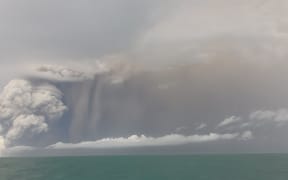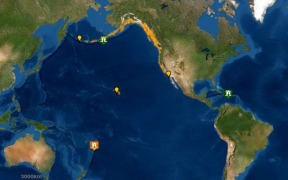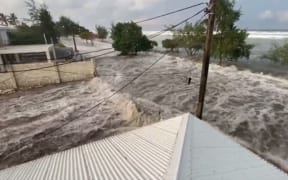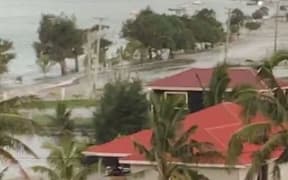Reports are starting to trickle in from Tongan families who are re-connecting with loved ones in parts of Tonga, while Japan and NSW evacuate coastal residents.
Phone lines and internet remain down for much of Tonga, but people are beginning to share information on social media after speaking to loved ones.
There are unconfirmed reports that the tsunami advisory in Tonga is still active and that Tonga's Prime Minister has authorised bakeries, petrol stations and shops to provide necessities.
There have been no official reports of casualties in Tonga and Save The Children has reported one person is missing in Nuku'alofa.
There are reports that the villages of Sopu, Kolomotua, Kolofo'ou, Ma'ufanga, Patangata have been affected by the tsunami, especially areas near Vuna Road.
Unofficial reports that the villages of Fanga and Havelu are less affected than other areas.
In a press conference this afternoon, Prime Minister Jacinda Ardern said communication as a result of the eruption had been difficult but the New Zealand Defence Force and the Ministry of Foreign Affairs were working to establish what what needed and how to help.
New Zealand's High Commission in Nuku'alofa is in contact with local authorities and damage assessments were underway.
An NZDF P3 Orion is on standby to fly over the area once atmospheric conditions allow.
There are currently 30 New Zealanders registered as being in Tonga.
Alerts in place for New Zealand
The west coast of the South Island has been included in a warning about dangerous sea conditions as a result of the volcanic eruption in Tonga.
The National Emergency Management Agency this morning said that coastal areas on the north and east coast of the North Island are expected to experience strong and unusual currents and unpredictable surges at the shore.
It said the conditions were dangerous for swimmers, surfers, people fishing, small boats and anyone in or near the water close to the shore.
The agency later also added the west coast of the South Island and the Chatham Islands to the advisory area.
It comes after a tsunami hit Tonga when underwater volcano Hunga-Tonga-Hunga-Ha'apai erupted for eight minutes, throwing clouds of ash into the sky, yesterday afternoon.
Waves flooded the capital Nuku'alofa, where video footage has shown water engulfing buildings.
The eruptions have been heard as booms or 'thumps' across the Pacific, in Fiji, Niue, Vanuatu, and in New Zealand.
RNZ listeners from Northland, to Wānaka in Central Otago have reported hearing what sounded like gunshots, loud bangs, or sonic booms.
Tsunami waves reported around the world
Meanwhile, the United States and Japan are warning people on their Pacific coastlines to stay away from the shore because of tsunami waves from the Tongan eruption.
Hundreds of thousands of Japanese citizens have been advised to evacuate as waves of more than a metre hit coastal areas.
Around 230,000 people were advised to evacuate across eight prefectures due to the tsunami risk.
Reuters reports 10 boats were capsized on Shikoku island in southern Japan and 27 flights cancelled.
Meanwhile, two Australian islands off New South Wales are evacuating people from beaches and other low-lying areas around their coasts.
The evacuations are under way on Norfolk Island - where the highest tsunami surge so far measured 1.2 metres - and Lord Howe Island.
Australian authorities say it is unclear how long the tsunami risk will last.
The US warned of strong currents and waves, and coastal flooding.
The National Weather Service for Alaska also confirmed they had heard the eruption.
Look back at RNZ's live coverage for 16 January 2022:





